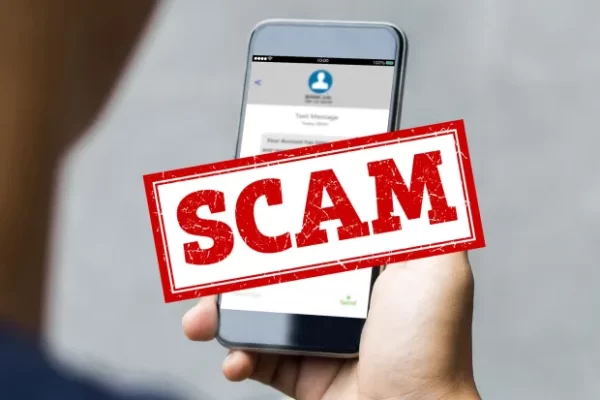In the digital age, where communication takes place at our fingertips, the prevalence of scams and fraudulent activities has surged. One such deceptive tactic that has gained notoriety in recent times is the “us9514961195221” scam fake text messages. These malicious messages often appear as legitimate notifications, luring unsuspecting individuals into a web of deceit. In this article, we will delve into the intricacies of this scam, uncover its modus operandi, and equip you with the knowledge to protect yourself from falling victim to it.
Understanding the “Us9514961195221” Scam
-
What Is the “Us9514961195221” Scam?
At its core, the “us9514961195221” scam is a fraudulent text message designed to deceive recipients into taking actions that can compromise their personal information, finances, or security. These messages often claim to be from reputable organizations or government entities, exploiting trust to manipulate individuals.
-
The Anatomy of a Fake Text Message
Before we explore the various tactics employed by scammers in the “us9514961195221” scheme, let’s break down the typical structure of a fake text message:
- Sender Impersonation
Scammers often impersonate legitimate senders, such as banks, government agencies, or well-known companies, to gain the trust of the recipient.
- Urgency and Threats
The messages create a sense of urgency or fear by claiming that immediate action is required. This may involve threats of legal consequences or account suspension.
- Suspicious Links
The text messages contain links that, when clicked, lead to malicious websites or prompt the download of malware-infected files.
- Solicitation of Personal Information
Recipients are asked to provide sensitive information like Social Security numbers, credit card details, or login credentials.
- Financial Scams
Some variations of this scam involve offers that seem too good to be true, aiming to swindle victims out of money or personal information.
How to Recognize and Avoid the Scam
-
Spotting Red Flags
Protecting yourself from the “us9514961195221” scam starts with recognizing the red flags associated with fraudulent text messages:
- Unknown Sender
Be cautious of messages from unknown senders or numbers you don’t recognize.
- Grammar and Spelling Errors
Scammers often make mistakes in their messages, including grammatical errors and misspelled words.
- Requests for Personal Information
Legitimate organizations will never ask for sensitive information via text message.
- Verify the Source
Contact the supposed sender through official channels to verify the authenticity of the message.
Steps to Take if You Receive a Suspicious Message
If you receive a text message that appears to be part of the “us9514961195221” scam, here are the steps to take:
- Do Not Click on Links: Avoid clicking on any links provided in the message.
- Do Not Reply: Do not reply to the message, as this can confirm your phone number’s validity to scammers.
- Delete the Message: Remove the message from your inbox.
- Report the Incident: Report the scam to your mobile carrier and forward the message to 7726 (SPAM) to report it to your carrier’s spam-blocking service.
Staying Safe in a Digital World
In a world where technology connects us more than ever before, staying safe online is paramount. The “us9514961195221” scam is just one of the many tactics used by cybercriminals to exploit unsuspecting individuals. By being vigilant, informed, and cautious, you can protect yourself from falling victim to these scams.
Conclusion
The “us9514961195221” scam fake text messages serve as a stark reminder of the need for digital vigilance. Scammers are constantly evolving their tactics, making it essential for individuals to stay informed and alert. By recognizing red flags, avoiding suspicious messages, and taking the necessary precautions, you can navigate the digital landscape with confidence.
FAQs
- How do scammers get my phone number for these fake text messages?
Scammers often obtain phone numbers through various means, including data breaches, online surveys, and purchasing lists of contact information from the dark web.
- Are all unsolicited text messages scams?
Not necessarily, but it’s essential to be cautious of unsolicited messages, especially if they ask for personal information or involve financial offers that seem too good to be true.
- What should I do if I’ve already clicked on a suspicious link?
If you’ve clicked on a suspicious link, immediately disconnect from the internet, run a security scan on your device, and change any compromised passwords.
- Can I block these scam messages on my phone?
Yes, most smartphones have features that allow you to block specific numbers or report spam messages. Check your device’s settings or contact your mobile carrier for guidance.
- Is it possible to trace the scammers behind these messages?
Tracing scammers can be challenging, as they often use techniques to hide their identity. It’s best to report the scam to the appropriate authorities and take steps to protect your personal information.















Be First to Comment